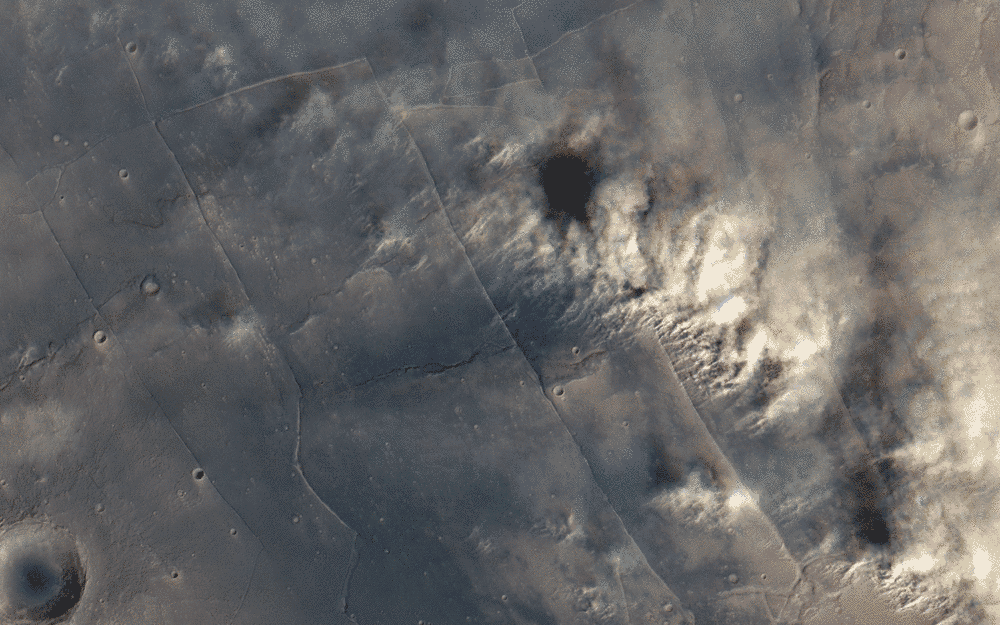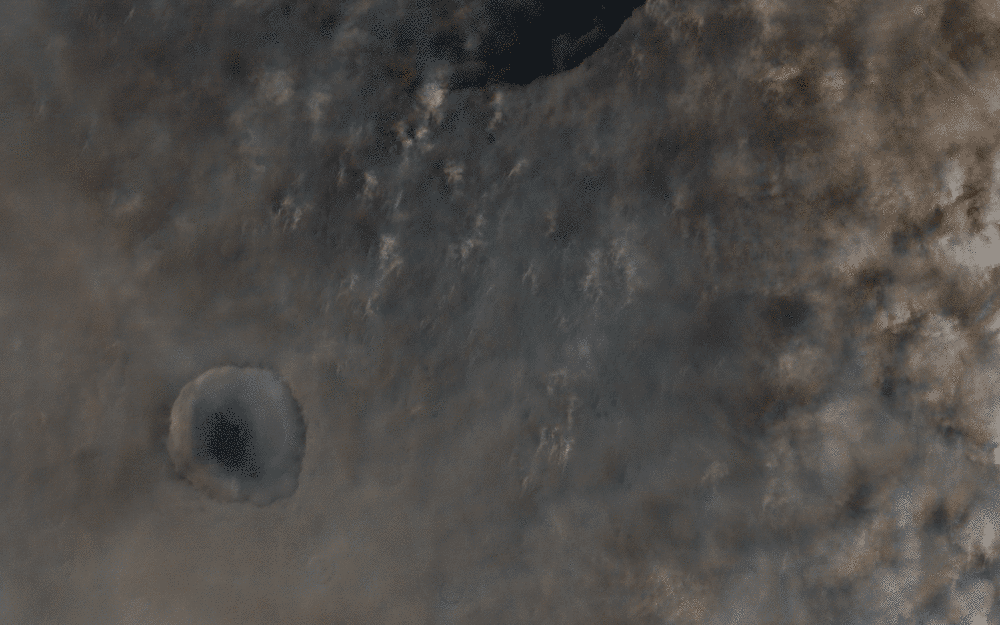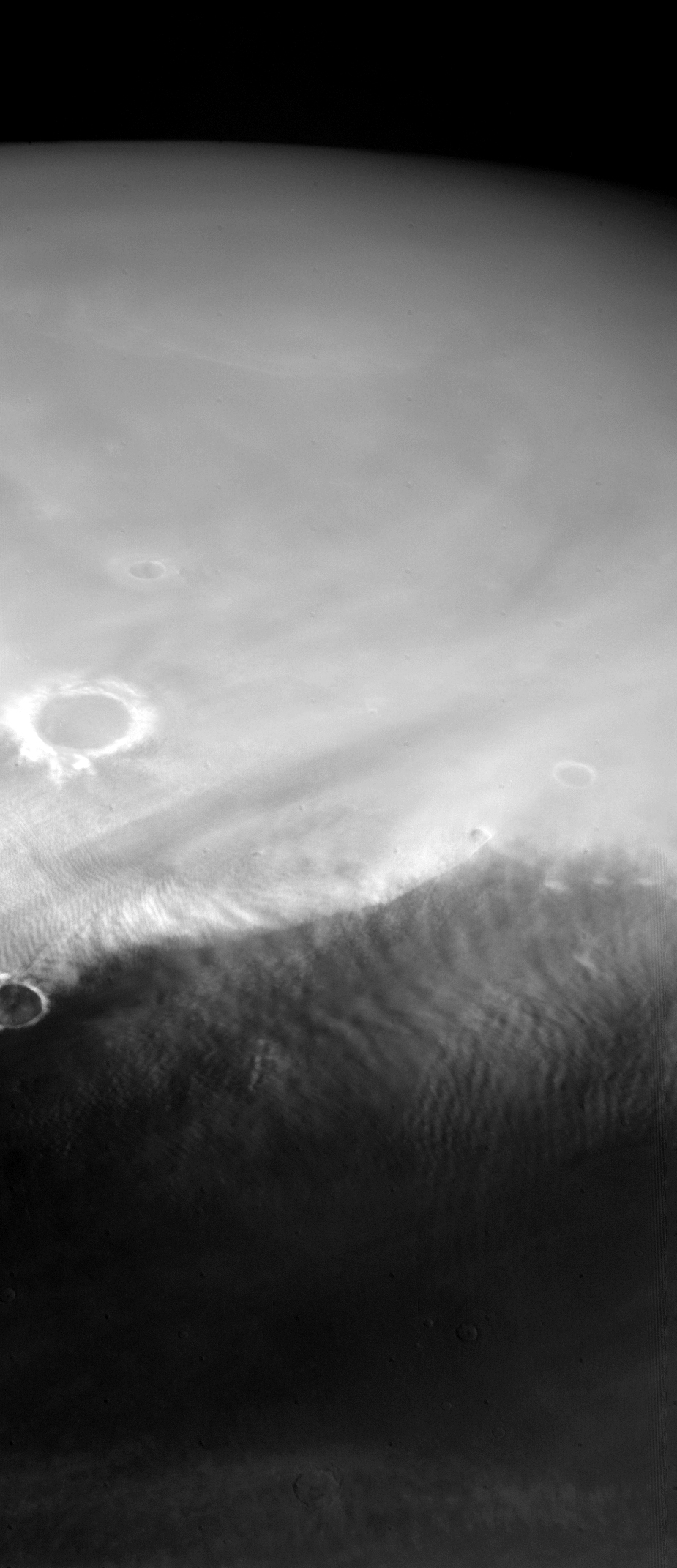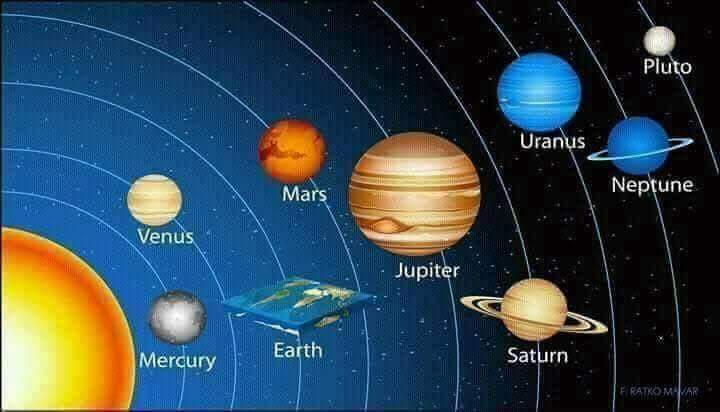It looks like you're using an Ad Blocker.
Please white-list or disable AboveTopSecret.com in your ad-blocking tool.
Thank you.
Some features of ATS will be disabled while you continue to use an ad-blocker.
share:
originally posted by: humanoidlord
a reply to: wildespace
i know but that resolution looks like something from a new probe
According to this document, Viking Orbiter camera's resolution was 1056 x 1182 pixels: arc.aiaa.org...
Also confirmed here: isis.astrogeology.usgs.gov...
That's larger than Cassini's camera resolution.
edit on 9-5-2018 by wildespace because: (no reason given)
originally posted by: abeverage
I find it very interesting the dense cloud covered images as a lot of 70's - 80's of Mars narrative was a dead world without much of an atmosphere. This stunner Deuteronilus Mensae or this one in Tharsis Montes would have been a shocker in 1976, actually they are very amazing and a bit shocking today...just sayin
Now that you've mentioned dynamic versus "dead" environment on Mars, I'd like to draw everybody's attention to another great bit of work by the same person: Capturing Martian Weather in Motion
He did something very clever with still images from the Mars Express camera, producing timelapse-like images of dust and clouds billowing across the martian terrain:

Dust storm over Tempe Terra, seen by Mars Express' HRSC during a pass on June 17, 2011.

Dust lifting in the canyons of Deuteronilus Mensae, seen by Mars Express’ HRSC during a pass on June 30, 2011.

Wind blowing up the slope of the 52 km wide Micoud Crater in eastern Acidalia Planitia, seen by Mars Express’ HRSC during a pass on June 30, 2011.
More images and the details of how he's done it in the link above.
a reply to: wildespace
Absolutely amazing! I wish I had the time and the desire again to join in on this I used to dig through the MOC archives a lot and I thinks any imaging of the Poles done like this might prove interesting...
Absolutely amazing! I wish I had the time and the desire again to join in on this I used to dig through the MOC archives a lot and I thinks any imaging of the Poles done like this might prove interesting...
a reply to: wildespace
huh?! this is quite bizzare, should it not be the other way around, because that doesnt make so much sense
That's larger than Cassini's camera resolution.
huh?! this is quite bizzare, should it not be the other way around, because that doesnt make so much sense
originally posted by: eNumbra
originally posted by: watchitburn
a reply to: Xcathdra
Makes perfect sense!
What inaccurate trash. How can ATS allow the posting of something so blatantly false, even in jest; Pluto isn’t a planet
Dang, you made spit my coffee all over my laptop.
originally posted by: humanoidlord
a reply to: wildespace
i know but that resolution looks like something from a new probe
originally posted by: wildespace
According to this document, Viking Orbiter camera's resolution was 1056 x 1182 pixels: arc.aiaa.org...
Also confirmed here: isis.astrogeology.usgs.gov...
That's larger than Cassini's camera resolution.
originally posted by: humanoidlord
huh?! this is quite bizzare, should it not be the other way around, because that doesnt make so much sense
Space probe systems are as much about the mechanical properties (i.e. size & weight) as it is about the actual capabilities. A 150 year old photographic glass plate camera has better resolution than a 15 year old digital camera, but is also much larger and heavier.
Why are there shades of brown and green. When i see brown and green in earth pics i think trees and grass.
a reply to: Saint Exupery
the why they dint use a glass plate camera, otherwise its a waste of money and resources
the why they dint use a glass plate camera, otherwise its a waste of money and resources
a reply to: humanoidlord
Two reasons.
1) Because there wasn't room for a darkroom on the spacecraft.
2) Photographic plates are too heavy for carrier pigeons.
Two reasons.
1) Because there wasn't room for a darkroom on the spacecraft.
2) Photographic plates are too heavy for carrier pigeons.
a reply to: humanoidlord
Sorry, I had to log-off and didn't get to finish my thought. What I was going to go on to say was that the Viking Orbiter cameras were basically single-frame television vidicon tubes - 70's-style video technology modified with more scan lines for higher resolution. Vidicon tubes were a bit bulky, weighed a couple of pounds and used a fair amount of power. Cassini's imaging system used one of the first megapixel (1,000 x 1,000) CCD chips, which was MUCH smaller, lighter and frugal with power. Yeah, it didn't have quite as good resolution, but it was adequate to the task and the trade-offs were considered acceptable.
Hope this helps.
Sorry, I had to log-off and didn't get to finish my thought. What I was going to go on to say was that the Viking Orbiter cameras were basically single-frame television vidicon tubes - 70's-style video technology modified with more scan lines for higher resolution. Vidicon tubes were a bit bulky, weighed a couple of pounds and used a fair amount of power. Cassini's imaging system used one of the first megapixel (1,000 x 1,000) CCD chips, which was MUCH smaller, lighter and frugal with power. Yeah, it didn't have quite as good resolution, but it was adequate to the task and the trade-offs were considered acceptable.
Hope this helps.
Having a look through the Viking image archive, and made this two-frame mosaic of some cool clouds, using images taken through violet filter:


a reply to: wildespace
That such a funky image can be so cool is awesome. Someday my great great grand kid might see something like that from another star system.
That such a funky image can be so cool is awesome. Someday my great great grand kid might see something like that from another star system.
edit on 5/12/2018 by Phage because: (no reason given)
new topics
-
President-Elect TRUMP Picks Former Florida A.G. PAM BONDI to be U.S. Attorney General.
2024 Elections: 3 hours ago -
A Mysterious Orb filmed over NYC by local news
Aliens and UFOs: 5 hours ago -
Putin will warn civilians in targeted areas
World War Three: 6 hours ago -
The Popular Vote does not matter
Political Issues: 7 hours ago -
Gaetz withdraws from attorney general consideration
US Political Madness: 10 hours ago -
Bridgewater Triangle
General Chit Chat: 10 hours ago -
Is Russia Using a New Type of Beam Weapon Against Ukraine?
Weaponry: 11 hours ago
top topics
-
Well we know Putins ICBMs won't fail in their silos
World War Three: 15 hours ago, 13 flags -
International Criminal Court Issues Arrest Warrant For Netanyahu
Mainstream News: 13 hours ago, 13 flags -
Gaetz withdraws from attorney general consideration
US Political Madness: 10 hours ago, 12 flags -
Is Russia Using a New Type of Beam Weapon Against Ukraine?
Weaponry: 11 hours ago, 11 flags -
Putin will warn civilians in targeted areas
World War Three: 6 hours ago, 10 flags -
President-Elect TRUMP Picks Former Florida A.G. PAM BONDI to be U.S. Attorney General.
2024 Elections: 3 hours ago, 10 flags -
racist rant, but she made the arguement to get rid of DEI
US Political Madness: 15 hours ago, 10 flags -
The Popular Vote does not matter
Political Issues: 7 hours ago, 8 flags -
Bridgewater Triangle
General Chit Chat: 10 hours ago, 7 flags -
Here is why Western leaders in NATO have zero fear of nuclear warfare. At all. Zero.
World War Three: 13 hours ago, 6 flags
active topics
-
President-elect TRUMP Picks MATT GAETZ for his ATTORNEY GENERAL - High Level PANIC Ensues.
2024 Elections • 123 • : Vermilion -
Putin will warn civilians in targeted areas
World War Three • 26 • : KrustyKrab -
U.S. Closes Kyiv Embassy Over ‘Significant Air Attack’ Intelligence
World War Three • 46 • : KrustyKrab -
President-Elect TRUMP Picks Former Florida A.G. PAM BONDI to be U.S. Attorney General.
2024 Elections • 24 • : Xtrozero -
DNC Says it's CRAZY to Even Consider Replacing President JOE BIDEN as the Dem Nominee.
2024 Elections • 52 • : WeMustCare -
Encouraging News Media to be MAGA-PAF Should Be a Top Priority for Trump Admin 2025-2029.
Education and Media • 75 • : WeMustCare -
Gaetz withdraws from attorney general consideration
US Political Madness • 24 • : WeMustCare -
The Final Experiment is Scheduled for December 2024. Will it Finally Answer the Question?
Science & Technology • 25 • : Arbitrageur -
Post A Funny (T&C Friendly) Pic Part IV: The LOL awakens!
General Chit Chat • 7809 • : KrustyKrab -
International Criminal Court Issues Arrest Warrant For Netanyahu
Mainstream News • 36 • : Dalamax

